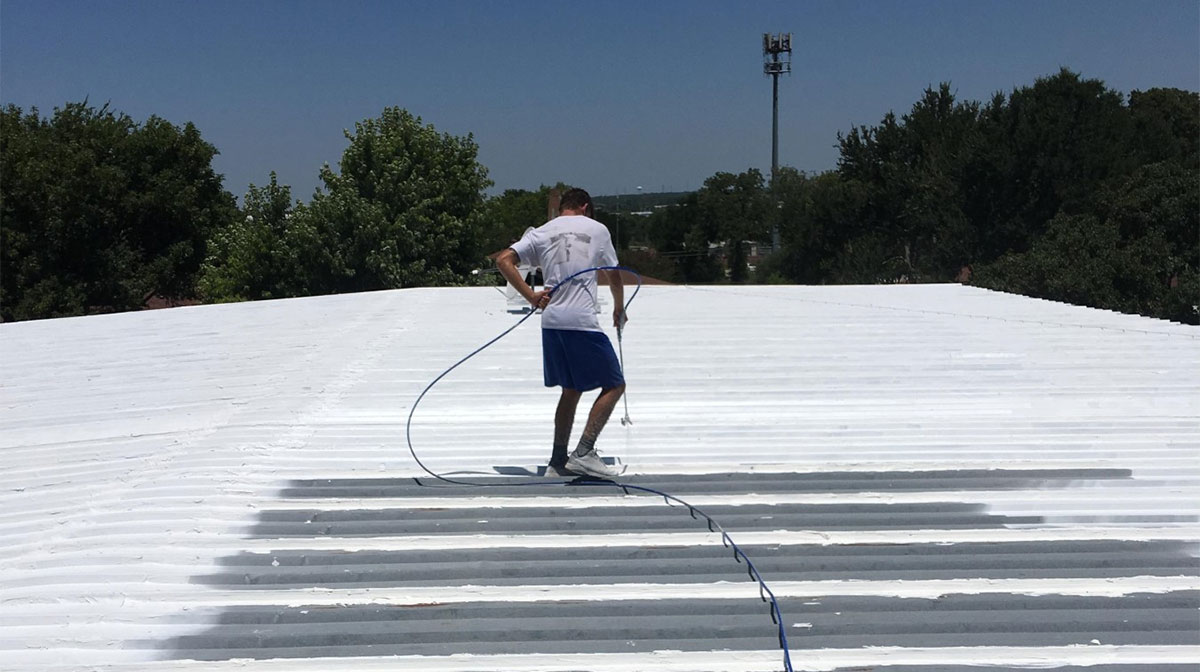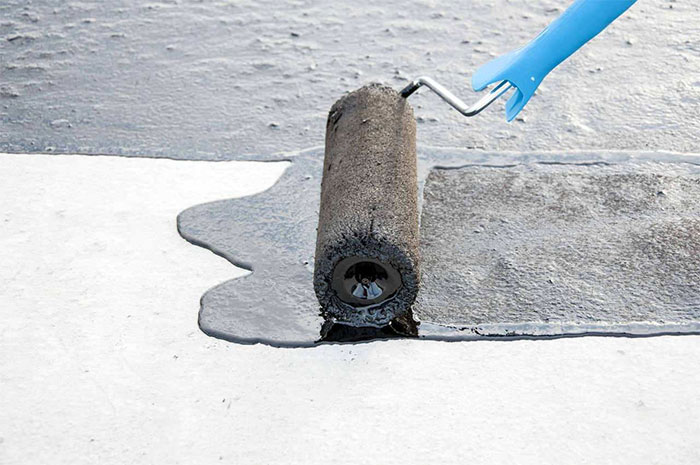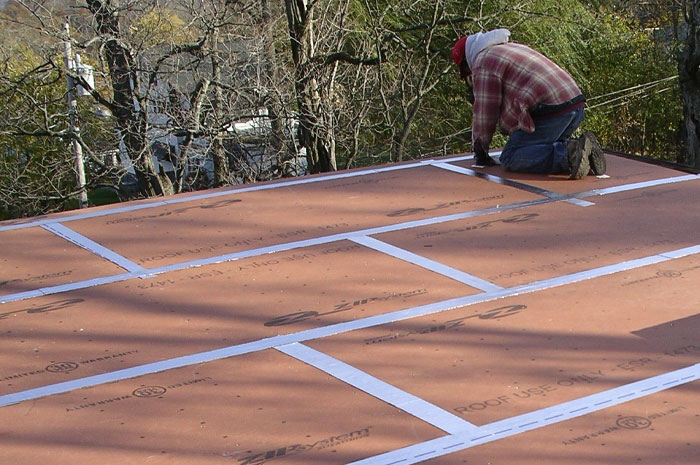
Roof sealing offers enhanced protection, longevity, and waterproofing to roofs, providing a cost-effective solution for preventing leaks and maintaining the structural integrity of buildings. In this article we argue that what is roof sealing.
What are the benefits of roof sealing?
Roof sealing, also known as roof waterproofing or roof coating, offers several benefits for residential and commercial buildings. Here are some of the key advantages of roof sealing:
- Leak Prevention: Seal a roof provides an additional layer of protection against water infiltration and leaks. It helps to seal any existing gaps, cracks, or vulnerable areas on the roof surface, preventing water from seeping through and causing damage to the underlying structure.
- Enhanced Durability: By creating a protective barrier, roof sealing improves the durability and lifespan of the roof. It shields the roofing materials from exposure to harsh weather conditions, UV radiation, and temperature fluctuations, reducing the risk of premature deterioration and extending the roof’s life expectancy.
- Energy Efficiency: Certain roof sealants have reflective properties that help to reduce heat absorption from the sun. By reflecting sunlight, roof sealing can contribute to lower indoor temperatures, reducing the need for excessive air conditioning and improving energy efficiency. This can lead to potential cost savings on cooling expenses.
- Reduced Maintenance: A properly sealed roof requires less maintenance over time. The protective coating helps to minimize the accumulation of dirt, debris, and pollutants on the roof surface, making it easier to clean and maintain. Additionally, roof sealing can prevent the growth of moss, algae, and fungi, which can cause aesthetic issues and degrade the roof over time.
- Improved Aesthetics: Roof sealing can enhance the appearance of the roof by providing a fresh and uniform finish. It can rejuvenate the color and overall look of the roof, giving it a more appealing and well-maintained appearance.
- Increased Property Value: A well-maintained and protected roof adds value to a property. Roof sealing can help preserve the structural integrity of the roof, ensuring it remains in good condition. This can positively impact the resale value of the property and attract potential buyers or tenants.
How to seal a roof?
Sealing a roof typically involves the application of a roof sealant or coating to create a protective barrier on the roof surface. Here are general steps to guide you in sealing a roof:
- Clean the Roof: Start by thoroughly cleaning the roof surface to remove any dirt, debris, or loose materials. Use a broom, brush, or pressure washer to ensure the roof is free of any contaminants that could compromise the adhesion of the sealant.
- Inspect and Repair: Check the roof for any signs of damage, such as cracks, holes, or deteriorated areas. Repair any identified issues before proceeding with the sealing process. This may involve patching holes, replacing damaged shingles, or addressing any structural concerns.
- Choose the Right Sealant: Select a roof sealant or coating suitable for your roof type and the specific requirements of your climate. Consult with a roofing professional or follow the manufacturer’s recommendations to ensure you choose the appropriate product.
- Apply the Sealant: Follow the instructions provided with the sealant product for proper application. Typically, the process involves using a brush, roller, or sprayer to evenly apply the sealant to the roof surface. Start from one end and work your way across, ensuring complete coverage. Pay special attention to seams, flashing, and any areas prone to leaks.
- Allow for Drying and Curing: After applying the sealant, allow it to dry and cure according to the manufacturer’s instructions. This may involve a specific waiting period to ensure the sealant forms a strong and durable protective layer.
- Conduct Regular Maintenance: Once the roof is sealed, it’s essential to perform regular maintenance to ensure its longevity. Inspect the roof periodically for any signs of damage or wear and promptly address any issues that arise.
What are the roof sealing materials?
There are various roof sealing materials available in the market, each with its own characteristics and suitability for different roof types and conditions. Here are some common roof sealing materials:
- Acrylic Roof Sealant: Acrylic roof sealants are water-based and offer good durability and flexibility. They are easy to apply and typically come in liquid form. Acrylic sealants are often used for flat or low-slope roofs and provide protection against UV radiation.
- Silicone Roof Coating: Silicone roof coatings are known for their excellent UV resistance and durability. They can withstand extreme temperatures and weather conditions. Silicone coatings are often used on commercial and industrial roofs and can be applied in liquid form.
- Asphalt-based Roof Sealant: Asphalt-based sealants, also known as asphalt emulsions, are commonly used on asphalt shingle roofs. They provide a protective layer against water infiltration and can help extend the life of the shingles.
- Polyurethane Roof Sealant: Polyurethane sealants offer excellent adhesion and flexibility. They are suitable for various roof types and can be used to seal gaps, cracks, and seams. Polyurethane sealants are often applied in a paste or caulk form.
- Butyl Rubber Roof Sealant: Butyl rubber sealants are highly flexible and offer good adhesion properties. They are commonly used for sealing seams, flashings, and joints. Butyl rubber sealants are available in tape, caulk, or liquid form.
- Elastomeric Roof Coating: Elastomeric coatings are designed to provide high elasticity and flexibility. They can be applied on various roof surfaces, including metal, concrete, and single-ply membranes. Elastomeric coatings offer excellent waterproofing and UV protection.
Roof sealing using geosynthetics
Roof sealing using geosynthetic products is a technique that involves the use of geosynthetic materials to provide waterproofing and protection to roofs. They are synthetic materials manufactured for various civil engineering and construction applications. Here’s how geosynthetics can be used for roof sealing:
- Geomembranes: Geomembranes, which are a type of geosynthetic material, can be used as a primary waterproofing layer for roofs. They are typically made of high-density polyethylene (HDPE) or polyvinyl chloride (PVC) and provide excellent impermeability, durability, and resistance to chemical and environmental factors. Geomembrane sheets are installed over the roof surface, creating a continuous barrier that prevents water infiltration and protects the underlying structure.
- Geotextiles: They can be used in combination with other roofing materials to enhance waterproofing and drainage capabilities. They are permeable fabrics that allow water to pass through while providing separation and filtration functions. Geotextiles can be used as a protective layer between the roof substrate and other roofing materials, helping to prevent clogging and promoting efficient water drainage.
- Geocomposites: Geocomposite sheets are composite materials that combine different geosynthetic components for specific purposes. In roof sealing applications, geocomposites such as geocomposite drainage layers can be used to enhance drainage efficiency. These layers consist of a geotextile filter fabric and a core material that provides a drainage path for water, preventing water accumulation on the roof.
- Geogrids: Geogrids are geosynthetic materials with a grid-like structure that offers reinforcement and stability to the roof system. They can be used to reinforce the roofing substrate, especially in areas where additional strength is required. A Geogrid Mesh can help distribute loads, minimize stress concentrations, and improve the overall structural performance of the roof.
How long does roof sealing last?
The longevity of roof sealing can vary depending on several factors, including the type of sealant used, the condition of the roof, the climate, and the level of maintenance. In general, roof sealing can last anywhere from 5 to 20 years or more. Here are some factors that can influence the lifespan of roof sealing:
- Quality of the Sealant: The quality and composition of the sealant play a significant role in its durability. Higher-quality sealants tend to have better resistance to UV radiation, temperature fluctuations, and wear, which can contribute to a longer lifespan.
- Roof Type and Condition: Different roof types, such as flat roofs, sloped roofs, or metal roofs, have different sealing requirements and may be subject to varying levels of exposure and stress. The condition of the roof, including the presence of any existing damage or deterioration, can also impact the longevity of the sealant.
- Climate and Weather Conditions: The climate in which the roof is located can affect the lifespan of the sealant. Regions with extreme temperatures, high humidity, heavy rainfall, or frequent exposure to sunlight may experience more significant wear and degradation of the sealant over time.
- Maintenance: Regular maintenance and inspection of the roof can help identify and address any issues or damage promptly. Cleaning the roof, removing debris, and performing necessary repairs can help prolong the effectiveness of the sealant and extend its lifespan.
Conclusion
In conclusion, roof sealing is a beneficial process that provides protection and waterproofing to roofs. By applying the appropriate sealant, the roof’s lifespan can be extended, leaks can be prevented, and durability can be enhanced. Roof sealing materials such as acrylic, silicone, asphalt-based sealants, and geosynthetics offer various advantages depending on the specific roof type and requirements.
Regular maintenance and adherence to manufacturer guidelines are crucial for maximizing the effectiveness and longevity of the roof sealing. Overall, roof sealing is an important investment that contributes to the overall integrity and longevity of a building’s structure.





